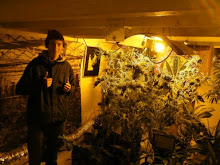2010-15
How will we live:
in reality, not very differently than we do today. more environmentally aware, though the main changes are going to come from government policy and large businesses.
To take a less practical and more ideological approach, we will be living in a self sustaining, environmentally friendly and harmonious way. The separations between class/wealth will be gone and the entire planet will live together without conflict. Their will be one government that makes decisions on behalf of the whole planet. Purhaps another crack at communism is in order?
Weather Conditions:
More eratic climate, more destruction of habitat for wildlife and pollutants, which causes effect on water supplies/ozone etc.
There is no positive outlook on climate change in the short or long term future, the pattern has already begun and global warming is in effect. Rising oceans, ice melting etc. only thing we can do to help is minimize destruction of environment etc.
Inside/outside homes:
Inside our homes will be minimal amount of furniture, very clean, basic, well designed, reduction in unnecessary items/clutter, use of whites and clean colours. Use of organic and recycled materials as much as possible.
Outside, will be in the same image. small clean areas, no rubbish etc. but surrounded by greenery, rain forests and wildlife. an integration of home and surrounding landscape/habitation.
Materials:
In reality plastics and other low biodegradable meterials will still be in use. government policy however will make these products more expensive so hopefully a reduction in their production will come into effect.
In the 'perfect world' materials of the future would be recycled or organic/high biodegradable materials for minimal impact on long term environment etc.
Buildings:
Buildings will be either very rounded and curvy to link into the surrounding forests etc. (organic shapes) or will become very square, compound type buildings to reduce amount of space required for human habitation. They will incorporate greenery with simple, white, clean design (lots of windows etc.).


































_small.jpg)

















